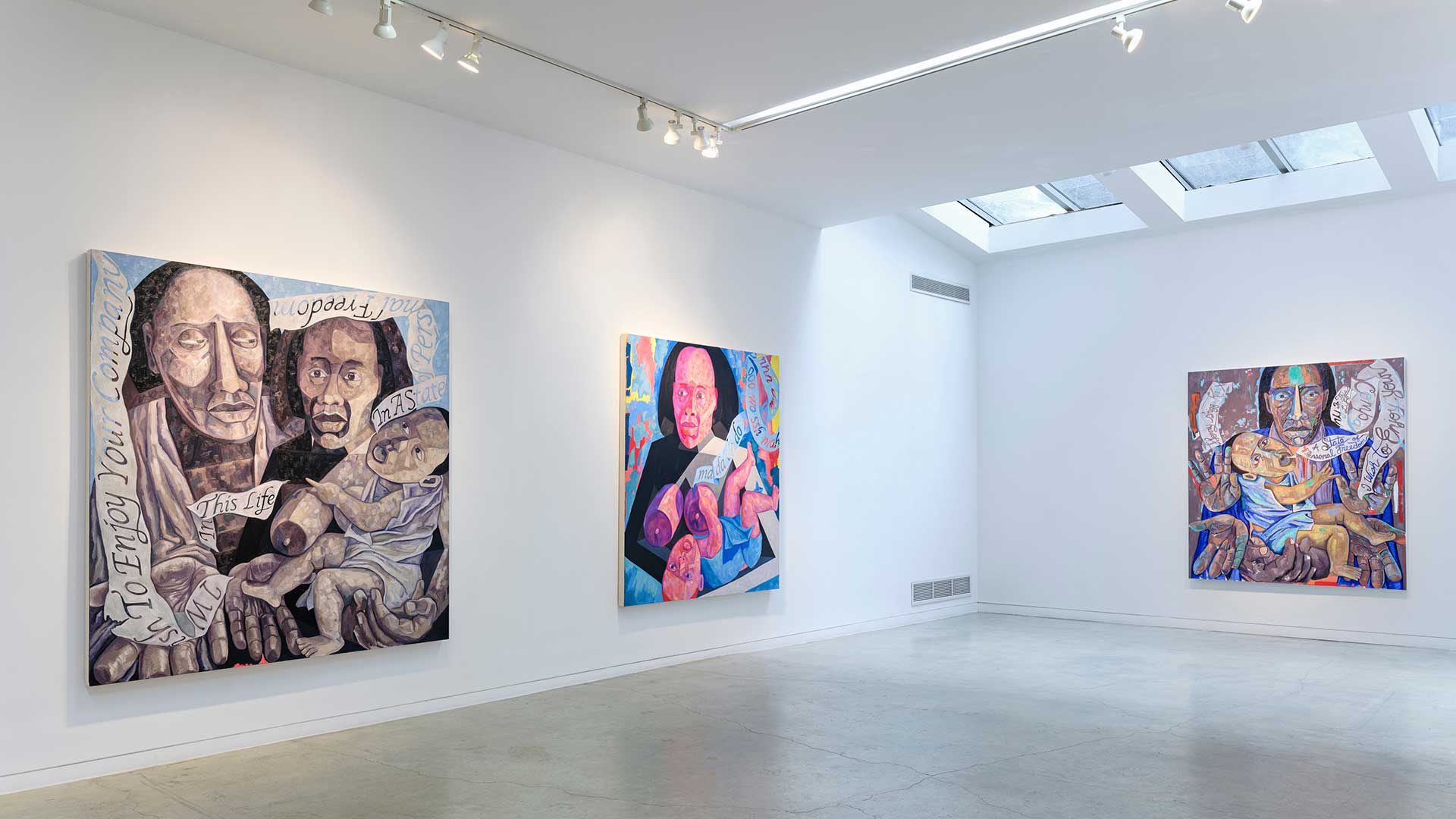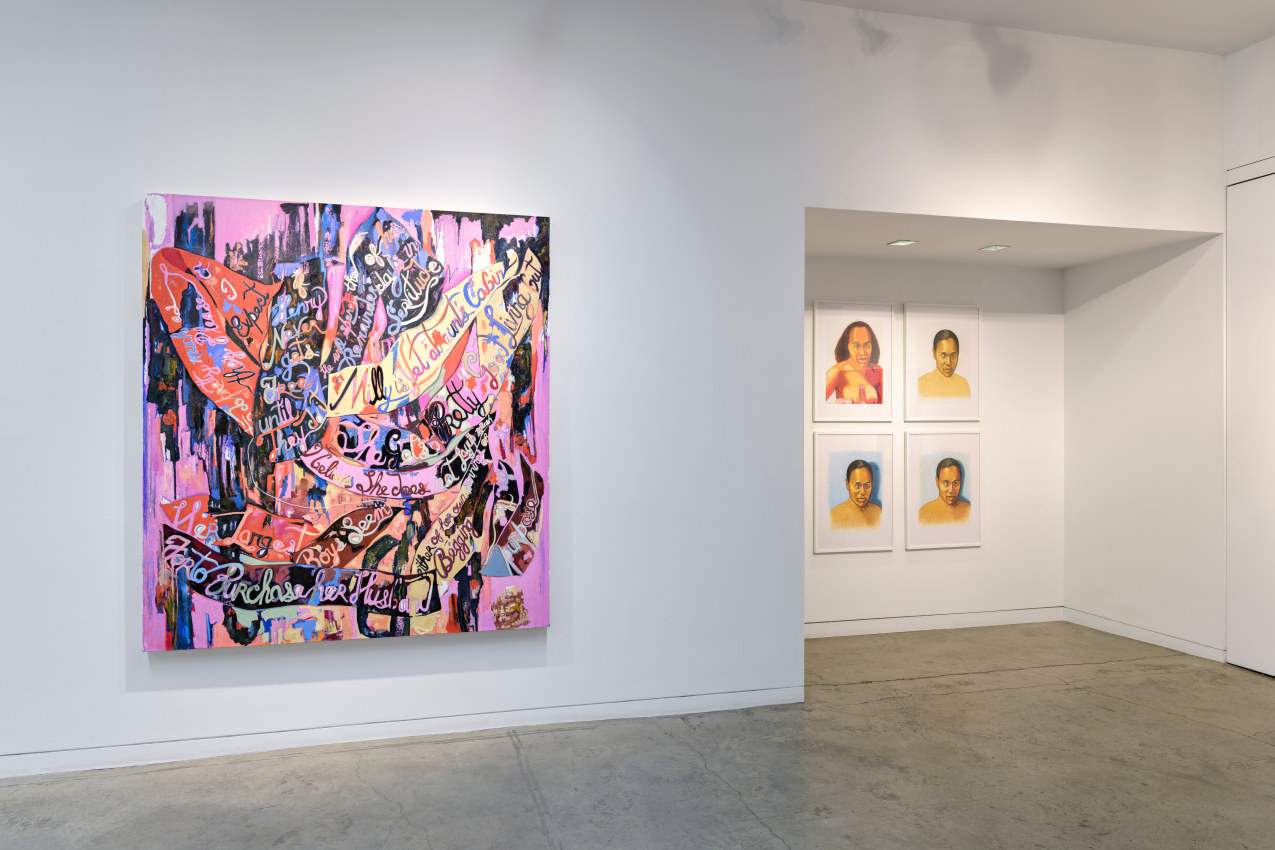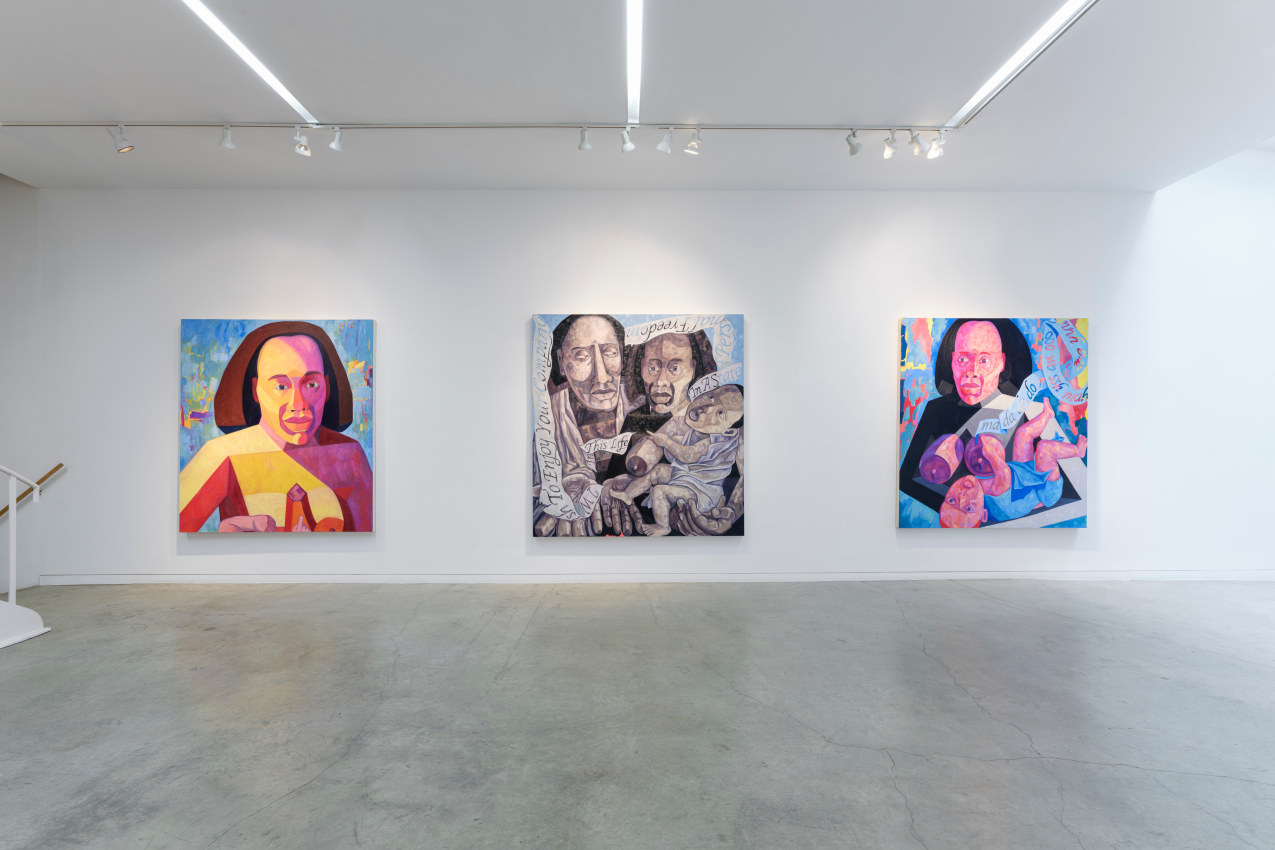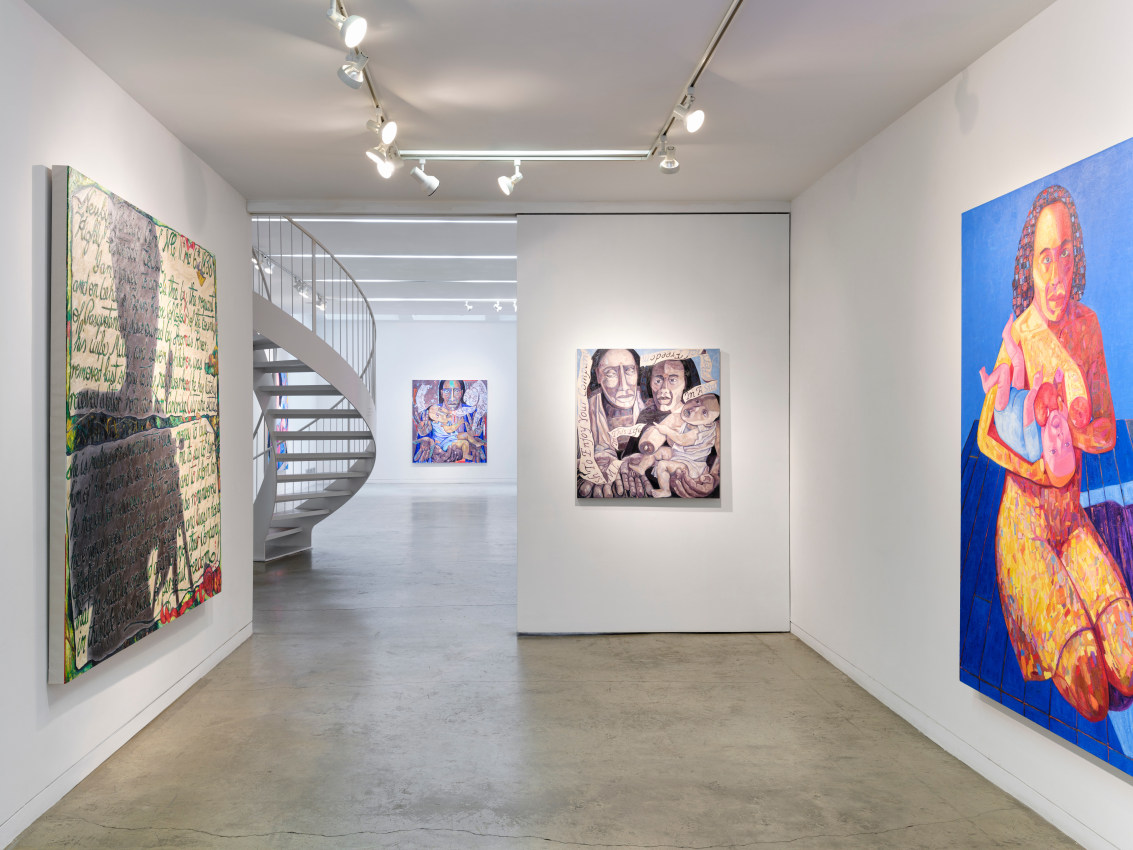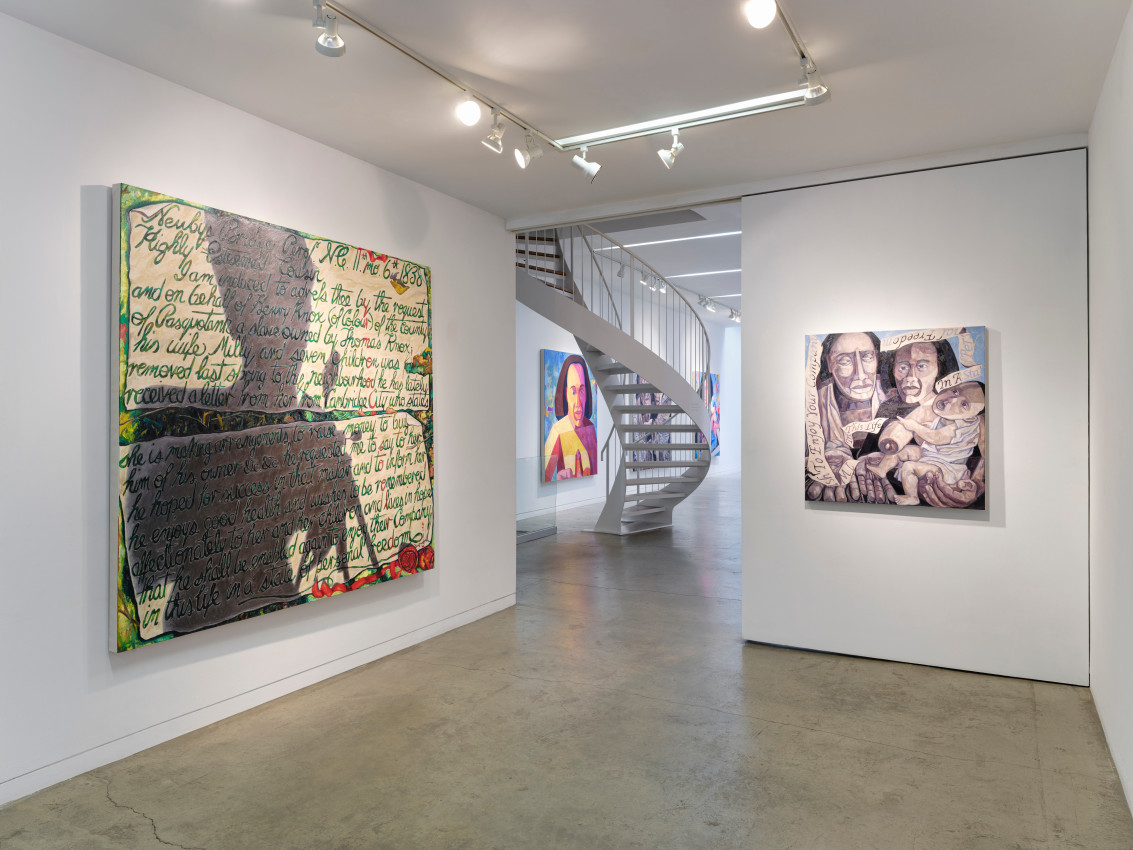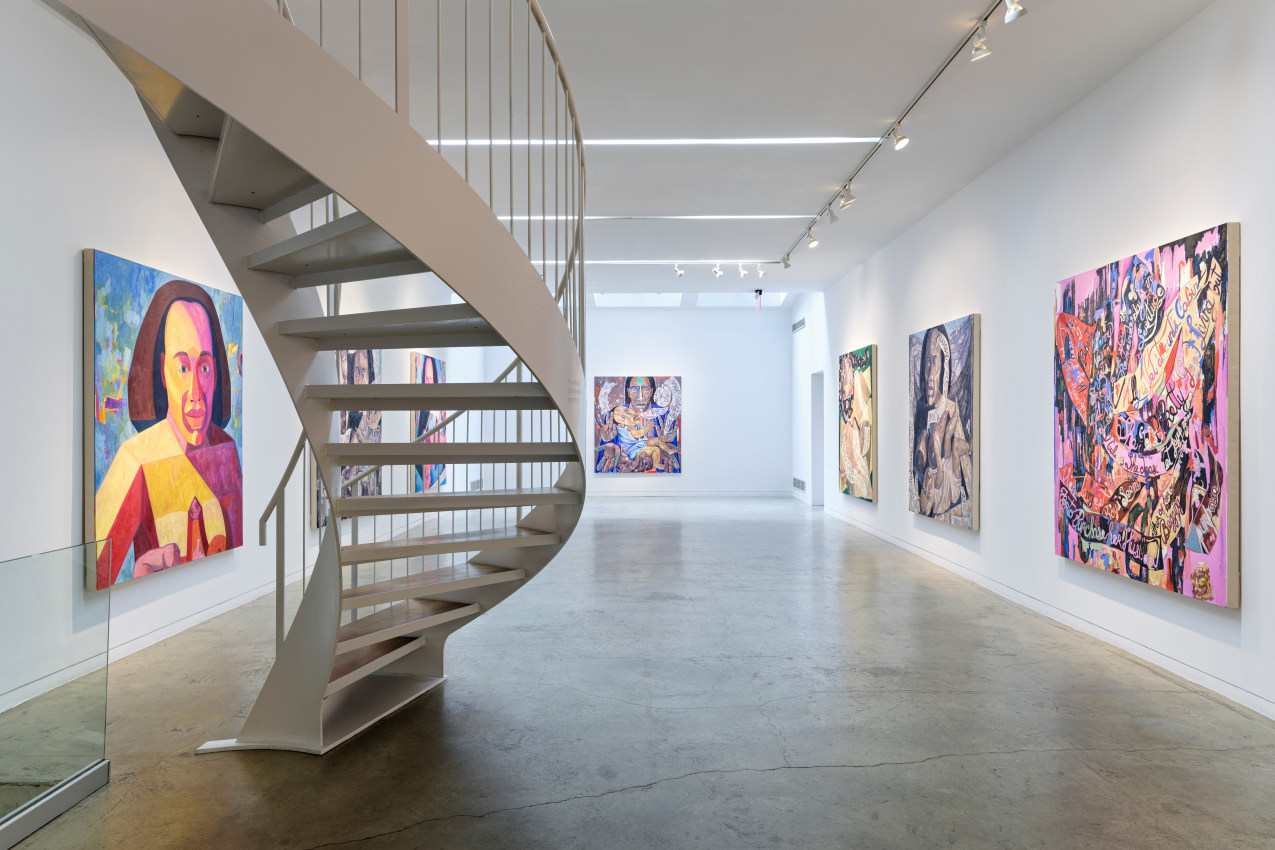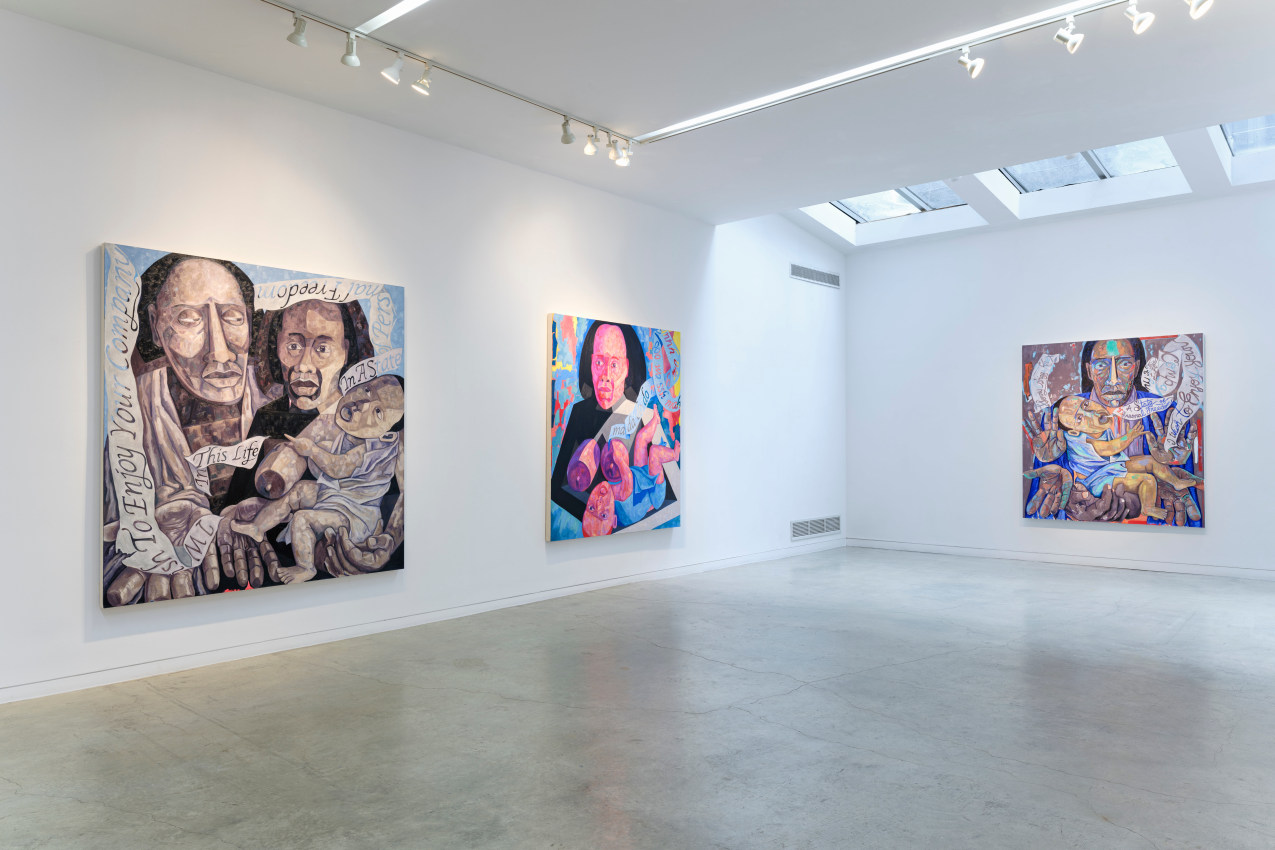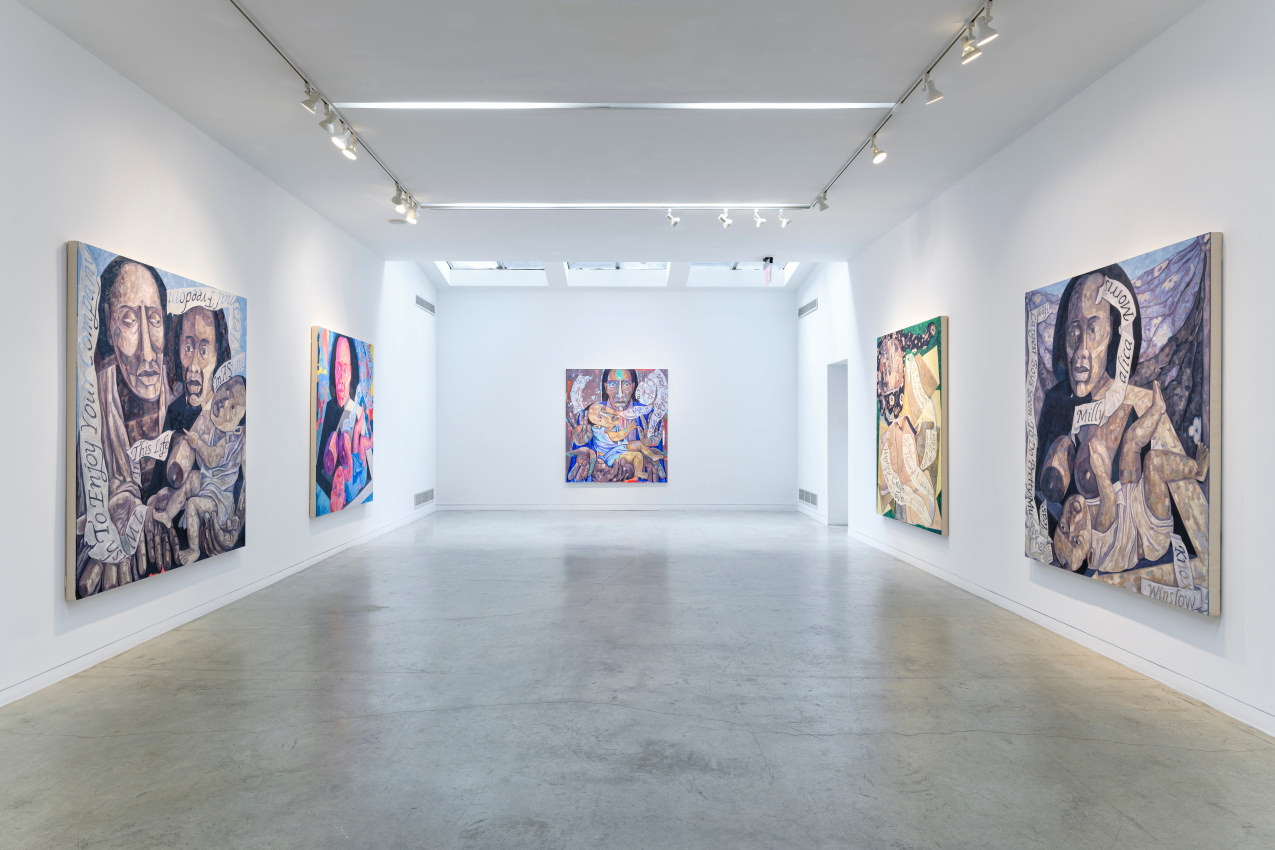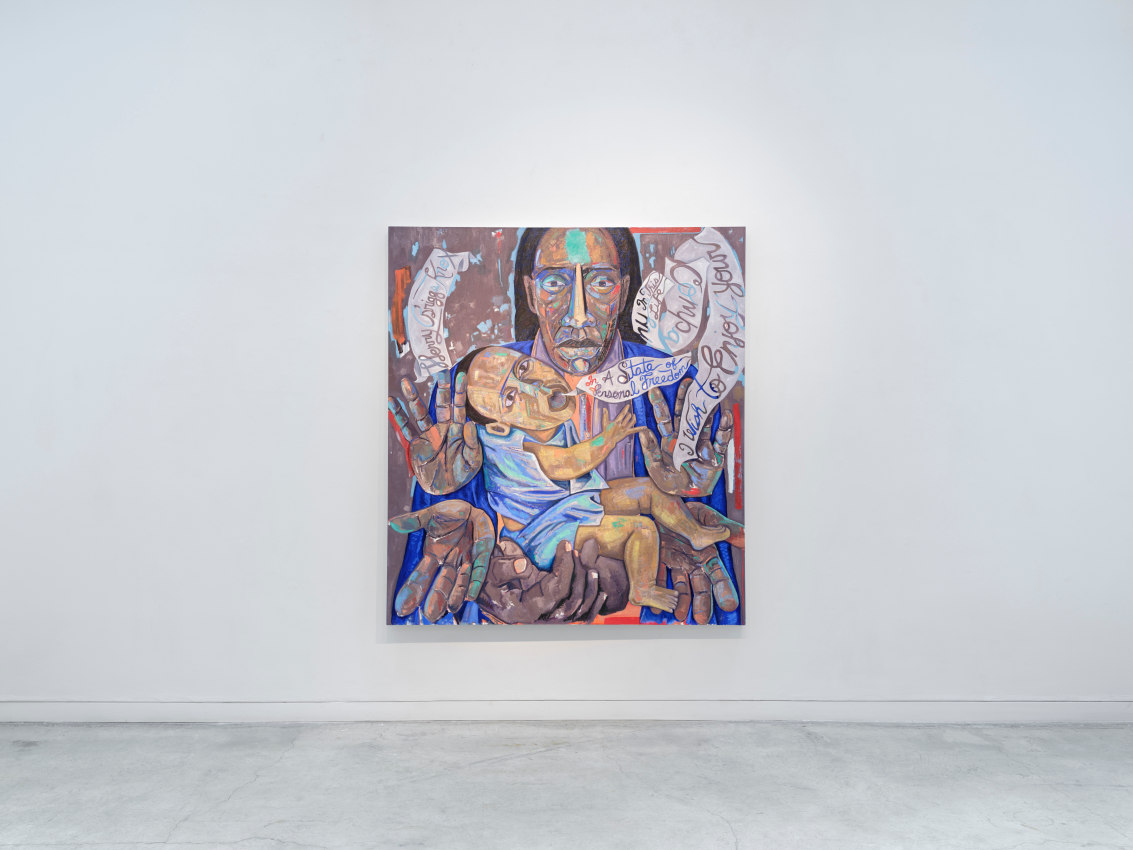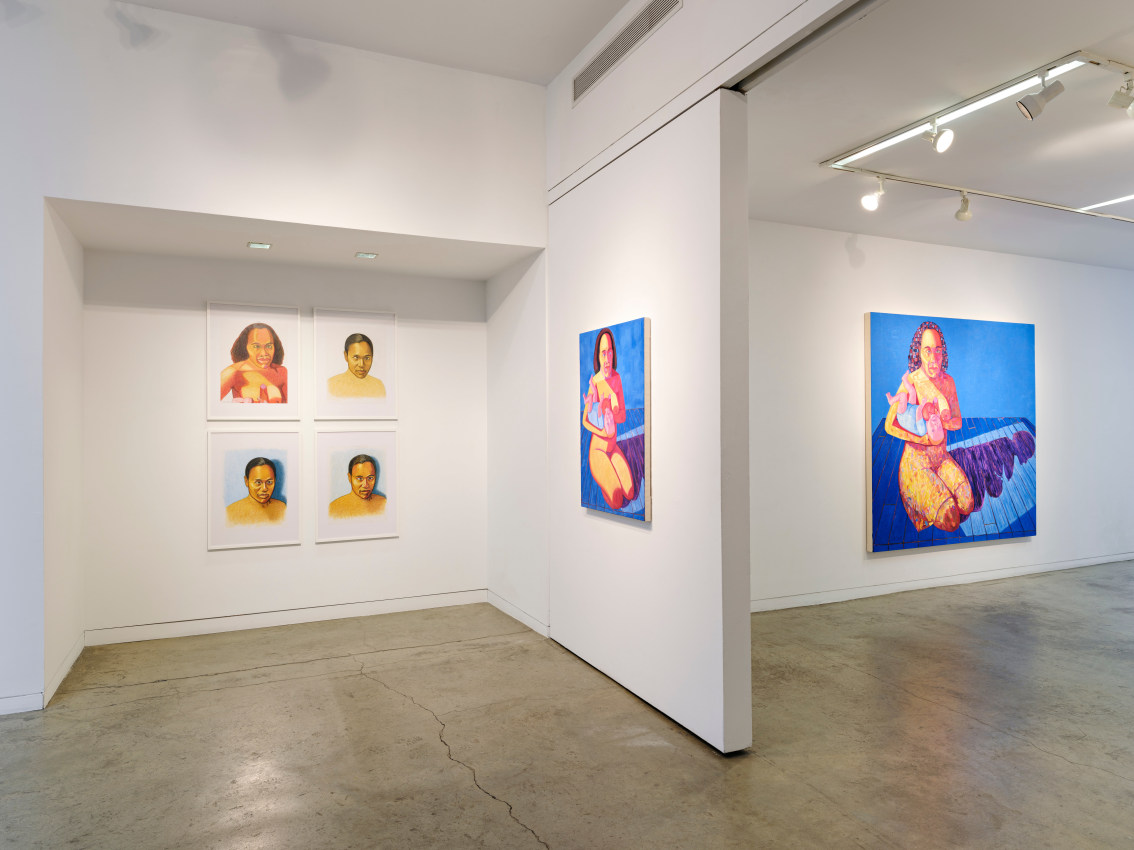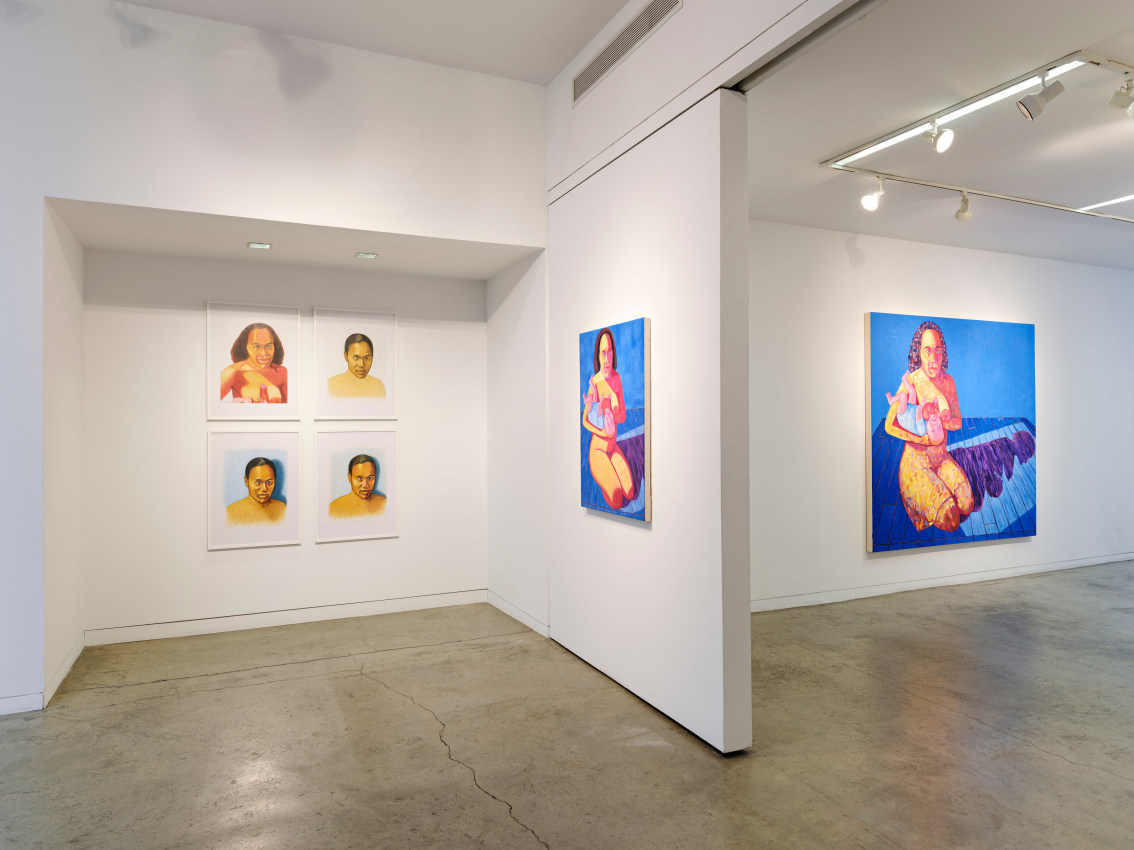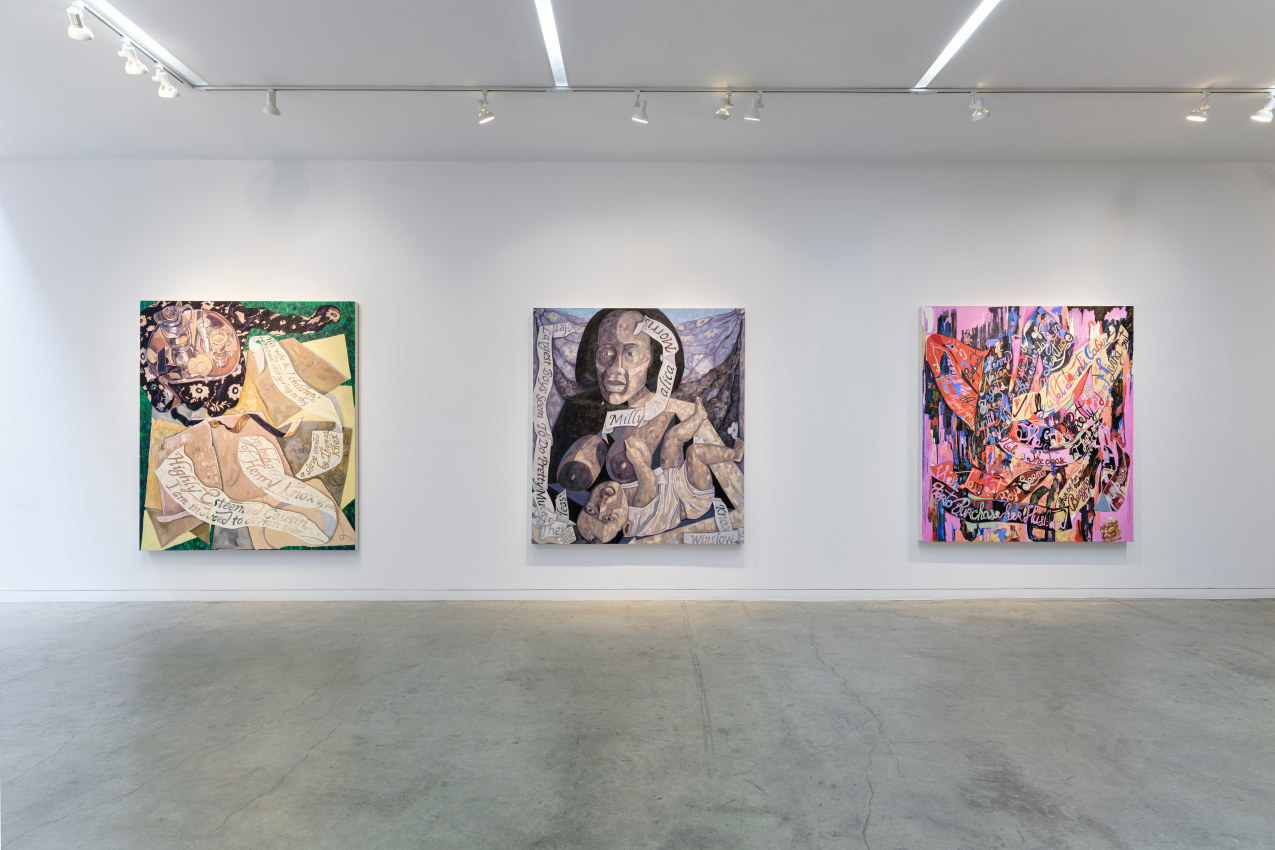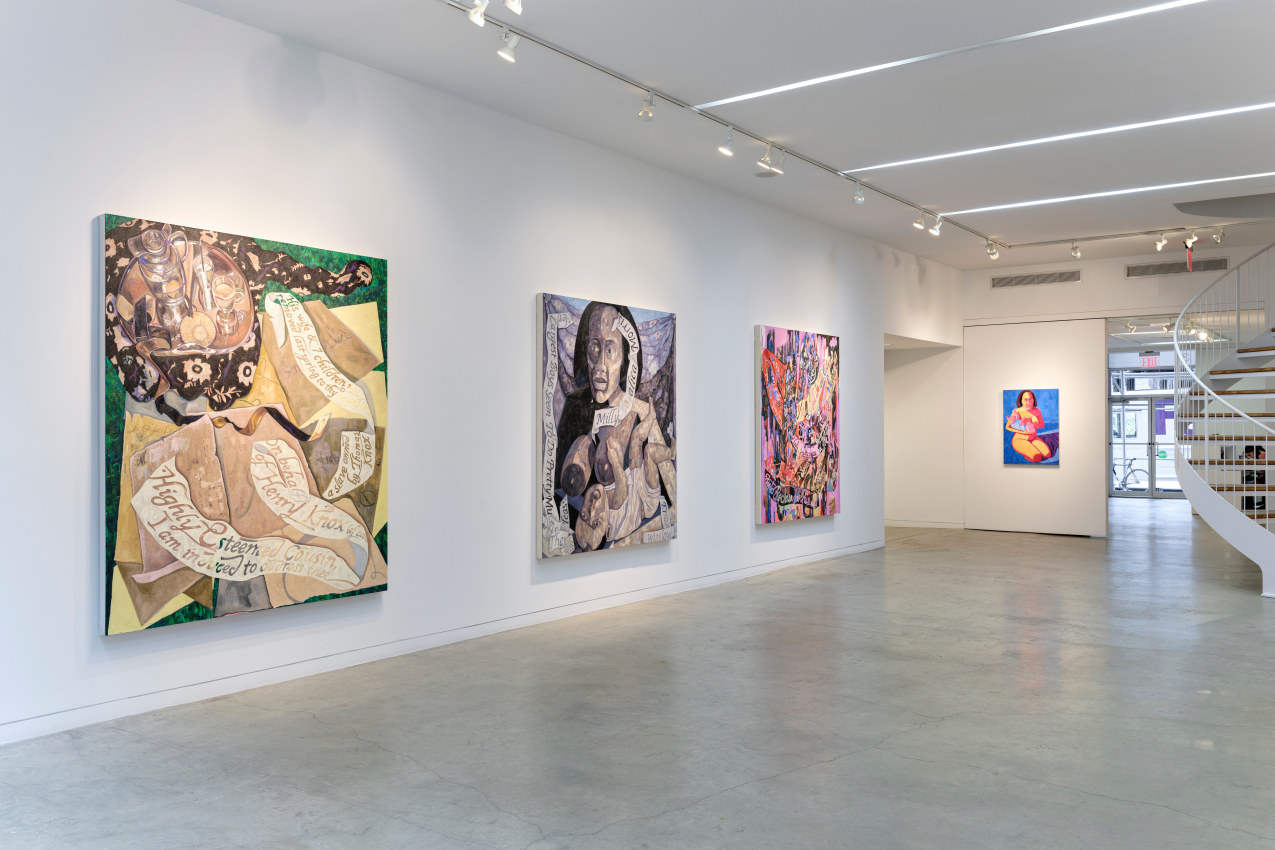Aicon is pleased to present Black-word, a much-anticipated New York exhibition of new paintings and drawings by Mequitta Ahuja. Black-word is the second U.S. solo exhibition of the American-born artist with the gallery. The thematic heart of the show is genealogy—Ahuja’s research, a collaboration with her deceased grandmother who started researching and writing the family story in the 1940s.
While Ahuja is best known for her large-scale self-portraits, In Ahuja’s 2020 exhibition with the gallery Ma, the artist expanded her representation to include the image of her mother. In this new work, Ahuja goes further, centralizing images of her 19th-century Black ancestors as she imagines them from documentary evidence, including letters and written descriptions in government documents and photographs of their descendants (the artist inherited hundreds of photos from her grandmother). By setting her own image to the side while centralizing pictures and words of or about her ancestors, Ahuja’s new work simultaneously marks a radical departure from her oeuvre and its logical extension. In Black-word, Ahuja retains her signature themes: identity, autobiography, the creative imagination, and history—both personal and painterly. She references the classical marriage portrait and paintings of the Christian holy family, including the breastfeeding Madonna, and, using a strategy of medieval and renaissance art —scrolling ribbons of text “banderoles” that further animate and relate the stories depicted, Ahuja tells the story of her maternal lineage, claiming both her family story and the story of the Western figurative tradition as hers.
From portrait to multiple figure painting, text painting and still life, bright color palette to near-grey-scale, Ahuja demonstrates her vast skill and painterly interests. She exploits the traditional portrait composition of the powerfully stable triangle. Still, she imbues that triangle with architectural dimensionality forcing her naturalism to reside with her other investigations of form, including their grasp-ability–forms that appear to jut into the viewers’ own space, such as Milly’s breast in As They Please, In a Free State and Babble. In these works, the artist repeats and reconfigures her imagery—showing Ahuja’s iterative process of invention, extension, and refinement.
Much of Ahuja’s primary genealogical sources were written by White people about or on behalf of her Black ancestors. The artist understands this as erasure, even as it’s a form of access and visibility. “It simultaneously and paradoxically makes visible AND obscures my Black ancestor’s own words and stories,” the artist says. “Our story is buried beneath that of these White protagonists who, in letters and records, document and chronicle their own lives.”
In this body of work, Ahuja focused primarily on the mid-life story of two of her Black ancestors, Milly Morris and Henry Knox, who separated in 1838 due to their differing status—he an enslaved man, she a free woman of color. After months of deep research, Ahuja found her main text; she paints words from an 1838 letter, which the artist and Jordan Landes—library curator of the Friends Historical Library of Swarthmore College, located in the archived papers of a White Quaker aptly named Aaron White. Aaron and his cousin David were among a few Quakers who aided in the removal of free people of color, including Ahuja’s great, great, great, great grandmother Milly Morris and her seven free children, out of the slave state of North Carolina to Indiana, during that state’s early settlement. Though never recognized as such, Milly and her seven children were a “first family” of Indiana. In As They Please, Ahuja’s own “Madonna del Latte,” the baby interrupts the act of breastfeeding to identify its mother by her alliterative name Milly Malica Morris. In this work, Ahuja also includes something rarely seen in paintings, a footnote!
In Portrait of Henry, Ahuja depicts not mother and child but father and baby, re-envisioning Henry’s status as a slave “hand” through the depiction of his three sets of hands, including hands from which his speech emanates. In Cousin, Portrait of Henry and Milly is Yet at Aunt’s Cabin, Ahuja hand copies the handwriting found in the 1838 letter written by David White. Cousin is a rare still-life painting by the artist.
Ahuja views painting as a received form, its own kind of inheritance. She visually catalogues painting conventions established over centuries while using those conventions to make new meanings. Ahuja’s works are layered with meaning—discourses of the personal and the painterly.
Read more +
Read less -







 Sign in with email
Sign in with email


